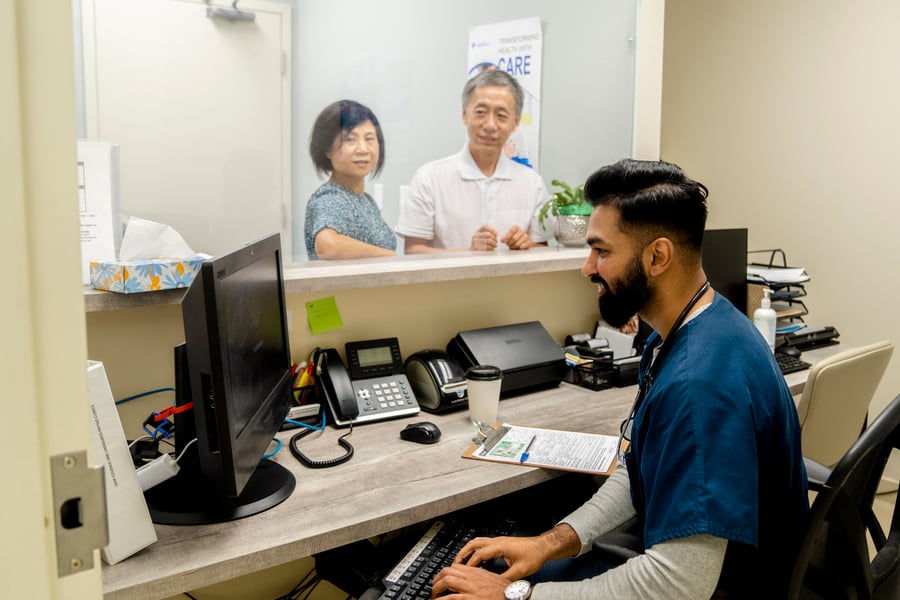
A critical, yet often-overlooked component to successful practice management is patient scheduling. Done correctly, it ensures a smooth flow of patients throughout the day with few backlogs or gaps and increases revenue. Done poorly, it results in angry patients, wasted time, stressed staff, and rushed appointments.
Each practice should adopt an appointment scheduling method that is effective at optimizing workflow efficiency, lightening staff burdens, and boosting revenue. That begins with understanding the different scheduling options. While the goal of each is the same, the methods vary.
In this article, we’ll share the four most common patient scheduling methodologies and how you can use technology to further enhance the effectiveness of the method you choose.
The 4 most common appointment scheduling strategies
There are four methods commonly used to schedule patient appointments. Each method comes with its own set of unique benefits and considerations. Let’s dive into each in more detail.
Wave scheduling
With wave scheduling, patients come to the office in waves at certain times throughout the day and are seen in the order in which they arrive. Typically, an office will schedule three to four appointments every 30 minutes to an hour. This is useful for balancing provider availability and patient demand. The risk is that patients might become upset if they have to wait too long.
Modified wave scheduling
This is like wave scheduling, but more patient friendly. It calls for double-booking patients for the first slot of each hour and leaving the end of the hour open to allow the provider to catch up if running behind. The extra time at the end of each hour prevents waiting times from snowballing during the day and it provides enough flexibility for providers to spend additional time with complex problems while saving time on simpler appointments.
Central scheduling
This method, which requires that all appointments be booked through a central system, even for practices with multiple locations, is probably the most common. It’s a more formal system than decentralized scheduling in which staff are responsible for managing the schedules of individual providers. The centralized system has several advantages, including greater control over scheduling, less confusion over responsibilities, less chance of double booking, and easier metrics tracking. However, if the system is used for multiple locations, it’s important that each office be run in a similar fashion with identical hours and workflows.
Cluster scheduling
This method calls for scheduling patients with similar needs on consecutive appointments on the same day. By booking immunizations or youth sports physicals consecutively, it allows providers to treat patients more quickly.
Unlock efficiency with patient self-scheduling
Online appointment self-scheduling software is exactly what it sounds like: a system that allows patients to manage their healthcare appointments online, at their convenience. This approach to scheduling is growing in popularity for several reasons. According to a recent survey, a staggering 8 in 10 healthcare consumers expressed that online appointment booking would greatly simplify the scheduling process. Furthermore, 79% of respondents indicated they prefer using patient scheduling software to book and manage appointments. This preference is not just a matter of convenience; it's a reflection of a broader demand for digital health services that cater to patient needs outside traditional office hours.
The importance of self-scheduling extends beyond patient convenience, however. It plays a crucial role in capturing more revenue for healthcare organizations. Remarkably, 40% of appointments are booked after business hours, suggesting that practices requiring patients to call may risk losing appointments.
Another benefit of patient scheduling software is the opportunity for providers to streamline staff workflows. The shift from managing incoming phone calls to focusing on patient care not only improves operational efficiency but also contributes to a more satisfying work environment for healthcare professionals.
When considering self-scheduling appointment software, a key feature to consider is its ability to sync seamlessly with your EHR, so your schedule is always accurate. Additionally, look for a solution that can adhere to unique scheduling rules and methodologies, so patients can choose the correct appointment type based on practice’s predefined criteria.
Additional technology to keep patient appointments on track
The best-designed and thought-out patient schedule can be derailed by no-shows, late arrivals, and absenteeism on the part of staff and providers. These are unavoidable to a degree, but there are technologies available that can help practices minimize disruptions.
Patient appointment reminders
Just like providers, patients are busy. That means they sometimes forget appointments, particularly when the visits are scheduled months in advance. The little reminder cards practices hand out are likely to get lost long before the appointment date. Missed appointments are bad for workflows and revenue, while rescheduling puts another burden on staff, and, ultimately, can lead to poor outcomes for patients.
It’s essential that practices have automated systems for reminding patients of their appointments. These can be delivered through the patient’s medium of choice – text, email, phone call, or a combination of the above. With timely reminders patients are more likely to keep appointments or reschedule them before the day of the visit. The fewer no-shows, the better scheduling works.
Wait lists
Patient scheduling solutions with automated wait lists can enhance both patient satisfaction and operational efficiency by filling cancellation slots. These systems automatically alert patients when a desired time slot becomes available, allowing patients to easily change their appointments online, bypassing the need to call the office. This convenience reduces patient frustration and helps avoid missed appointments. From the providers’ perspective, automating wait lists leads to better allocation of resources, fewer gaps in the schedule, and ultimately, higher quality care.
Virtual visits
Telehealth appointments offer a faster and more convenient option for patients and practices. Virtual visits experienced explosive growth during the COVID-19 pandemic and patients are still interested in this option – a recent survey found 76% of patients who have had a telehealth visit would prefer a virtual visit in the future. Telehealth benefits scheduling by removing many of the potential disruptions to patient flow and often allows for a quicker appointment, one that happens without many of the administrative tasks that can slow down staff. It also reduces congestion in the waiting room.
Look for a telehealth option that integrates with your organization’s EHR as well as other digital tools, such as billing, scheduling and patient engagement technology. This allows clinicians and staff to access everything they need within a single system, which saves money and improves workflow.

Digitized patient intake
Digitized patient intake systems streamline healthcare appointments, ensuring they run on time by enabling patients to fill out forms online beforehand. This reduces paperwork delays, leading to punctual starts and a smooth appointment flow. This efficiency boosts both patient satisfaction and operational productivity, making digitized intake a valuable tool.
Using analytics to measure healthcare appointment efficiency
Many practices also find it helpful to analyze patient appointment trends to discover problems in their scheduling system and operations. For example, it’s helpful to know if there are certain days that are more congested than others or certain times of the day when the workflow slows down.
Some metrics to consider tracking, include:
No-shows
Monitoring no-shows detects patterns where patients are likely to cancel or skip appointments. This can create opportunities for double booking during time slots that are at highest risk of a no-show.
Cancellations
Appointment cancellation rates reveal how frequently patients cancel appointments and why. This is crucial to identify problems and take steps to reduce the rate.
Provider utilization
Calculate provider efficiency by examining the number appointments completed vs. the number of possible appointments to find additional capacity.
Self-scheduling rates
If a small number of patients are self-scheduling, it’s a good idea to promote this option more heavily.
Appointment time
Tracking average patient appointment time is a measurement of how effective a scheduling system is. Consider booking shorter time slots for patients who consistently take less time.
Third next available appointment (3NAA)
3NAA measures the delay patients experience when trying to schedule an appointment with a specific provider. As the name suggests, this metric is calculated by sampling all providers on the same day and counting the number of days between the patient’s appointment request and the third next available slot for that physician. Primary care practices should aim for a 3NAA of zero days, while specialty practices should strive for two days or less.
Finding the right partner for physician appointment scheduling
Patient scheduling and engagement is more complicated and critical to the financial stability of healthcare organization than it might initially appear. Practices that want to improve their processes also face the challenge of identifying the right technology and vendors to use. Rather than contract with multiple vendors whose software might not integrate well, practices should look for comprehensive platforms that offer every desirable feature, including scheduling, reminders, waitlists, telehealth, intake, and more.
Practices that invest in this technology will reap the rewards in the form of engaged and satisfied patients, increased revenues, smoother operations, and happier staff.
For more information about how InteliChart’s patient scheduling solution can streamline appointment management, request a demo today.


